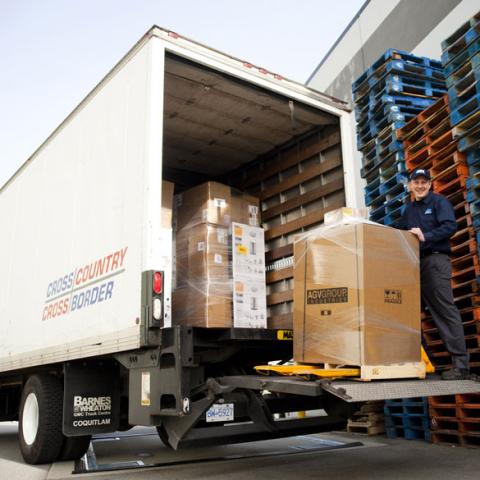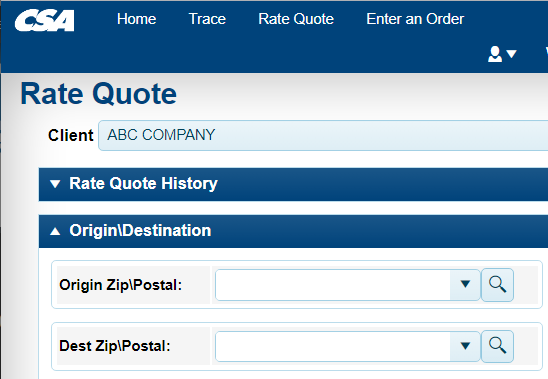Trucking Automation: Exciting Developments To Enhance Efficiencies and Safety
Trucking automation has sparked widespread excitement and discussion across the logistics industry, signaling a significant shift in how goods will be transported in the near future. The question is, “Is trucking automation legit?” All signs suggest that it is.
However, you must get a lay of the land before diving into trucking automation reviews or buying stock in the newest automated trucking business. With that in mind, here is everything you want to know about trucking automation.
What Is Trucking Automation?
Trucking automation uses artificial intelligence, sensors, GPS technology, and other hardware and software solutions to operate trucks with minimal human involvement. By reducing the need for human intervention, trucking companies can improve efficiency, reduce the likelihood of errors, prevent accidents, and better serve customers.
Trucking automation investment opportunities are also on the rise, fueling this emerging field's rapid growth. According to some estimates, the sector will experience a compound annual growth rate (CAGR) of 19.4% from 2023 to 2031, resulting in a value of $1.9B.
Automation trucking solutions will impact labor costs, fuel consumption, and other key processes. Reducing labor costs is a significant driver of trucking automation for business processes, as labor accounts for 40% of total trucking expenses.
Understanding the Levels of Trucking Automation
There are several levels of trucking automation. Level 0 involves no automation or technological assistance whatsoever. Modern vehicles usually have one driver support system, meaning they have reached Level 1 automation. Examples include braking assist systems, stability control, or blind-spot warning technology.
Level 2 vehicles have automated more complex processes like parking or lane changing. At Level 3, trucks can make decisions like slowing down or changing lanes to avoid collisions. Level 4 automation minimizes human inputs but still requires vehicles to be manned. Level 5 involves total autonomy, meaning trucks drive themselves.
6 Powerful Benefits of Automated Trucking
Trucking automation has the potential to completely reshape logistics. At CSA Transportation, trucking automation helps speed up customer service. CSA Transportation drivers have handheld devices to track local deliveries, which improves efficiency and keeps everything on schedule. Some additional perks of automating trucking processes are:
- Reduces Operational Costs
Automated trucking significantly drives down operational costs. Companies can save on fuel and repair costs with optimized routes and predictive maintenance. Reducing labor hours also represents another huge saving opportunity; driver salaries and benefits account for nearly half of trucking expenses.
- Enhances Safety on Roads
Drivers get tired, make mistakes, or miss small warning signs that might allow them to avoid an accident. AI doesn’t get fatigued, enabling it to promote safer road conditions and reduce the risk of accidents.
- Increases Efficiency and Productivity
Automation boosts efficiency. For instance, automated routing software can create optimized routes that avoid backtracking and reduce the likelihood of traffic delays. Trucks that are automated can also operate longer hours without the constraints of federal driving limits, ensuring timely deliveries.
- Improves Logistics and Supply Chain Management
Automated trucking streamlines the supply chain. Real-time tracking and AI-powered logistics optimization mean more reliable and efficient delivery schedules. Regardless of where your business lies on the supply chain, it will benefit from trucking automation.
- Greater Fuel Efficiency
Fuel waste is a hot topic, as governments, businesses, and individuals are pushing to reduce greenhouse gas emissions and protect the planet. However, manufacturers are still refining EV truck technology. In the meantime, trucking automation can provide immediate efficiency benefits and reduce fuel consumption.
- Improves Sustainability
Automated trucking is a step toward sustainability. Reduced emissions from optimized routes and fuel usage make it a more eco-friendly option.
Key Features of Trucking Automation
The world of trucking automation is packed with features and technologies designed to promote efficiency. Here are a few such features and technologies making a difference in logistics.
Autonomous Driving Technology
The ultimate goal is to fill the roads with autonomous trucks that never make errors and always arrive on time. While this technology is still being refined, it is being applied on a limited scale.
Vehicle-to-Vehicle Connectivity and Communication
Automated trucks must be able to communicate with one another and share information. By doing so, these systems can update other trucks about traffic conditions on the road ahead, improve safety, and increase traffic flow efficiency.
Telematics and GPS Tracking
These tools provide real-time data on vehicle location and condition. Both types of technology are crucial for fleet management.
Predictive Maintenance
Predictive analytics in maintenance can foresee potential vehicle issues, preventing breakdowns and reducing downtime. In turn, businesses can extend the lifespan of fleet assets, save money, and reduce delays.
Electronic Logging Devices (ELDs)
Electronic logging devices (ELDs) play a crucial role in compliance with state and federal operational limits. They document when drivers hit the road, how long they operate, and other vital details. Automating the logging process saves drivers time and also promotes better record accuracy.
Advanced Driver Assistance Systems (ADAS)
ADAS technology includes lane departure prevention solutions, braking software, and other tech-enhancing driver skills. ADAS technologies are a precursor to trucking automation.
Remote Monitoring and Control
These technologies allow fleet managers to monitor and control vehicles remotely. These technologies promote better safety and oversight by connecting decision-makers to their fleets.
Route Optimization
AI-driven route optimization ensures the most efficient paths are taken for each delivery. Route optimization unlocks significant fuel savings and efficiency improvements when implemented at scale.
Fuel Efficiency Optimization
With automation technologies, fleet managers can monitor idle time, speed, vehicle performance, and other factors that impact fuel efficiency. Then, they can implement proactive measures to improve fuel efficiency and reduce waste.
Data Analytics and AI Integration
Data analytics and AI integration technologies combine all these other tools. They give fleet managers a glimpse into the big picture to optimize the entire fleet.
Embrace the Future of Trucking With CSA Transportation
Whether you are looking for top trucking companies in Atlanta, GA, or orchestrating freight shipping USA to Canada, CSA Transportation can help you get the job done right. As a leader in freight shipping throughout North America, we have embraced trucking automation to promote efficiency, timeliness, and rapid customer service.
All CSA Transportation drivers are provided with handheld devices to track local shipments, boost efficiency, and increase on-time delivery rates. When every second counts, don’t settle for anything but the best. Partner with CSA Transportation, a premier trucking automation company.






